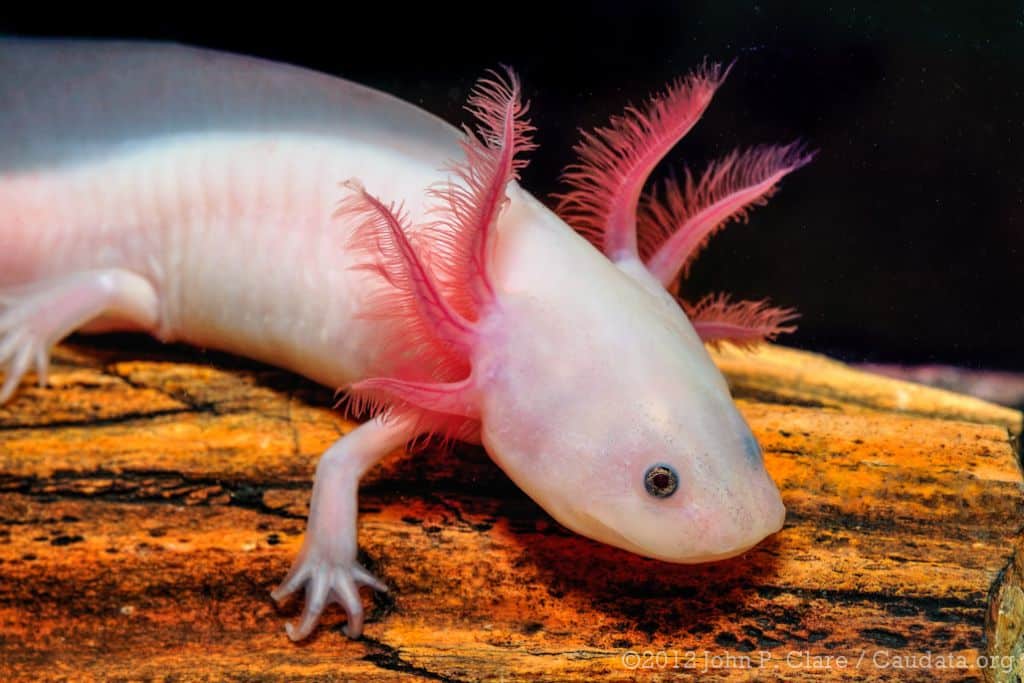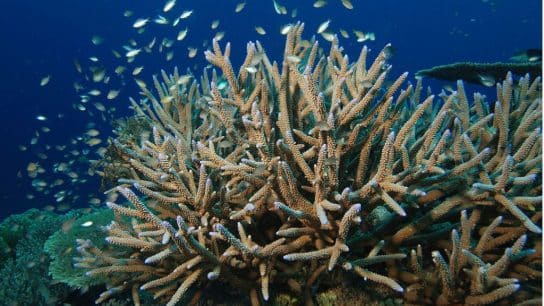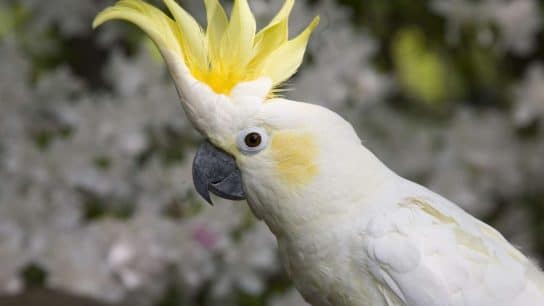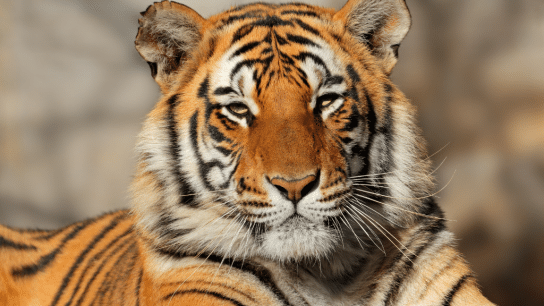The axolotl (pronounced ACK-suh-LAH-tuhl) is a species of salamander under the genus Ambystoma (mole salamanders) that inhabits the lakes and wetlands of southern Mexico City. Unlike other amphibians, the axolotl is neotenic and does not go through metamorphosis, thus remaining aquatic and retaining its juvenile features into adulthood. A popular pick for the exotic pet trade, the ever-smiling, feathery-gilled axolotl is easily bred in captivity, having further piqued the interest of scientists and geneticists through its ability to regenerate parts of its body, such as its limbs, eyes, heart, spinal cord and parts of its brain. As such, the species’ plight is regarded as a conservation paradox: although abundant in captivity, rampant habitat degradation and disturbance has rendered the species critically endangered in the wild.
—
| Family | Ambystomatidae |
| Genus | Ambystoma |
| Species | Ambystoma mexicanum |
| Population | 50 to 1,000 mature individuals |
| IUCN Status | Critically Endangered |
Appearance
Axolotls are typically dark-coloured, with green or brown mottling and occasional silver highlights across their skin. Pink or light-coloured varieties are often bred in captivity for the pet trade, as these are regarded as more “pleasing” shades. Individuals can also shift their hue to a slightly lighter or darker colour if needed for camouflage.
Measuring between 22 and 45 centimetres in length and weighing approximately 60 to 230 grams, the axolotl has a broad, flat body and a large head. Also referred to as the Mexican walking fish, individuals use their short, lizard-like limbs to carry themselves across the bottom of lakes and burrow into the substrate. Aided by webbed feet that operate like paddles, axolotls can move at an incredible 15 kilometres per hour when threatened.
While most amphibians begin their life cycle in the water, gradually undergoing metamorphosis to develop the necessary features for a predominantly terrestrial adult life (such as air-breathing lungs and eyelids), the axolotl does not. In a phenomenon known as neoteny or paedomorphism, the axolotl forgoes metamorphosis and instead retains its juvenile features and aquatic habitat throughout its entire life cycle, reaching full size and sexual maturity. Although individuals do develop functional lungs and are able to breathe through their skin, the species uses external, feathery gills for underwater respiration. They also retain their tail, dorsal fin, and do not develop moveable eyelids.

Diet
Axolotls are carnivorous, nocturnal predators that employ an effective suction technique to inhale worms, mollusks, crustaceans, tadpoles, insects & their larvae, and small fish. Primarily targeting benthic organisms, the axolotl will often inhale gravel along with its prey, which aids with grinding and breaking down food within its stomach for digestion.
Habitat & Behaviour
A close relative of the tiger salamander (Ambystoma tigrinum), the axolotl once occupied a number of high-altitude lakes and wetlands across the Mexican Central Valley, approximately 2,240 metres above sea level. Lakes Xochimilco and Chalco, two spring-fed lakes located on the southern edge of the Basin of Mexico, once served as primary habitat for the species, along with connecting lakes Texcoco and Zumpango. However, extensive drainage projects carried out in the region have resulted in a significant loss of suitable habitat for the axolotl. Today, the species occurs only in three sites – the canals of Lakes Xochimilco, Chalco, and Chapultepec – with an extent of occurrence of 467 square kilometres.
The axolotl is a lentic species, inhabiting deep, still-water lakes. These amphibians require abundant aquatic vegetation for laying eggs, and are sensitive to shifts in water quality. During the day, individuals typically burrow into the sediment, in mud or among benthic flora to evade predators, such as storks, herons, and large fish (tilapia and carp), then hunt for prey nocturnally. Aside from a number of relatively simple insights, little is known about the ecology of wild axolotl populations, largely due to the fact that such populations are generally small and inaccessible. Existing information on the species has primarily been gathered from specimens kept in captivity, under laboratory conditions.
With a life span of 10 to 15 years, axolotls reach sexual maturity between the age of six months to one year. Following a dance-like courtship ritual, the male will deposit spermatophores onto the lake floor, which the female picks up with her cloaca to fertilise her eggs. The female will then lay an average of 300 eggs (although some can lay up to 1,000) on plants and rocks across the lake floor, obscured from predators. After approximately two weeks, the eggs hatch. Neither gender provide parental care, leaving larvae to fend for themselves.
Evolution and Adaptations
As mentioned, the axolotl has piqued the interest of scientists and geneticists for several of its ecological oddities; firstly, the fact that the species displays obligate neoteny. Some degree of neoteny occurs in 19 of the 32 extant species of Ambystoma, with most displaying facultative neoteny (a variation of metamorphosing and neotenic individuals or populations within the same species). Described as a developmental strategy, neoteny in salamanders has previously been linked to a lack of thyroxine (the hormone that primarily drives metamorphosis) during development, yet the ecological and environmental factors associated with its evolution are poorly understood.
In April 2024, a study investigating several proposed factors favouring the evolution of neoteny in salamanders concluded that it was strongly associated with lower latitudes (the most southerly end of 20 to 30° N) and, to a lesser degree, higher elevations. This is presumably due to the reduced seasonality and increased stability of aquatic habitats at lower latitudes, where precipitation is higher and temperatures remain relatively constant.
For most metamorphic amphibians, changing seasons, shifting day lengths and rainfall patterns typically act as triggers for the start of development. Climatic stability at lower latitudes therefore emit weaker cues for the start of metamorphosis, which, combined with the stability of aquatic habitats, results in low pressure for energetically expensive morphological change across seasons. Although obligate neoteny limits the range of habitats that can be occupied, potentially imposing an ecological cost on the species, metamorphosis comes with a significant energetic burden to stimulate developmental changes. Therefore, if environmental elements and resources are sufficiently stable year-round, a salamander may benefit from forgoing metamorphosis and utilising that energy to reproduce earlier. Harsh terrestrial conditions, which are often associated with higher elevations, may further encourage the evolution of obligate neoteny where aquatic habitats are at lower risk of drying up. Rather than viewing neoteny as a constraint, the study posits that neoteny is an adaptive specialisation to stable aquatic habitats, which are found within a limited latitudinal range.
In some experiments, researchers have driven axolotls to undergo metamorphosis by forcing them to breathe air, retaining the amphibians in damp moss or reducing the quantity of shallow water available to them, as well as by feeding them a diet of mammalian thyroid. Although these specimens walked relatively well on land, developed skin as dry as a metamorphosed salamander (by shedding the larval skin), breathed air, and lost their external gills and fins – essentially demonstrating that the species is capable of undergoing metamorphosis – they were not able to survive as well as natural paedomorphic axolotls.

A second biological peculiarity that has confounded scientists is the axolotl’s ability to regenerate numerous parts of its body, such as its limbs, lungs, heart, jaw, spine, eyes, and sections of its brain. Studies have shown that the species can regrow a single limb five times in the span of a few weeks with no scars, replacing every layer of tissue: skin, bone, cartilage, muscle, and stem cells. Other organs can be regenerated numerous times while remaining fully functional. Naturally, researchers and geneticists have been eager to determine how the axolotl’s regenerative capabilities function and whether they can be applied to humans.
Despite the mammoth size of the axolotl’s genome (estimated to be approximately 32 billion base pairs), examinations of the axolotl’s biological development have been made significantly easier by the fact that they have large cells: their eggs are approximately 30 times larger than those of a human, and the neural plate cells of an axolotl embryo are almost 600 times greater by volume. Additionally, an axolotl’s pigmentation varies greatly with each cell, whereas cell traits are typically uniform in humans, making it easier for researchers to determine which tissues in an embryo develop into each organ. As a result, the axolotl played a pivotal role in understanding the development and function of organs in vertebrates, providing insights into the causes of spina bifida in humans, the discovery of thyroid hormones, and the way in which cells take on different forms in embryos. The axolotl has even proven capable of accepting transplanted organs and limbs from fellow axolotls without the risk of rejection, and is said to be 1,000 times more resistant to cancer than mammalian species. In 2011, an extract from axolotl oocytes (immature egg cells) was utilised to stop breast cancer cells from multiplying by activating a tumour-suppressor gene.
Yet, the mechanisms behind the species’ regeneration have yet to be identified. A number of scientists believe that obligate neoteny may enable axolotls to retain (or maintain active) a trait or gene from their embryonic stage that directs the growth of organs and limbs, since these genes are typically silenced in humans as adulthood is reached. Focusing on the blastema (the wounded end of a severed limb), researchers have observed that, while such wounds are typically covered with skin tissue in humans, axolotls transform proximate cells into stem cells and even recruit farther cells to move nearer to the injury. These cells then begin to form into bones, skin, cartilage, muscle, and veins, similarly to how an embryo develops, with transforming growth factor-β playing a key role in both axolotl regeneration and the prevention of scar tissue in human embryos during their first trimester.
Ecological Importance
Although the study of axolotl biology is of critical importance to medical, genetic and oncological fields, the species also plays a role of ecological importance within its native habitat. As a carnivorous predator, axolotls control the population of numerous small, benthic species, preventing any disruptions in the delicate balance of the ecosystem. These amphibians have also been described as an indicator species, due to their sensitivity to changes in water quality, temperature, and pollution levels. Declines in the population size or general health of wild axolotls can help scientists determine the degree of environmental degradation affecting lakes and wetlands across the Mexican Central Valley, which may then bolster conservation efforts in the region.
Threats
Although axolotl populations are relatively difficult to assess in the wild, surveys and studies conducted since 1998 have indicated significant declines across the species’ native habitat. In 2002 and 2004, over 1,800 nets were cast along Xochimilco canals covering 39,173 m², yet a mere 42 specimens were caught. Alarming drops in population density estimates have also been reported, from 6,000 ind/km2 in 1998, to 1,000 ind/km2 in 2004, to 100 ind/km2 in 2008, to 35 ind/km2 in 2017. Ecological niche modelling has indicated that the axolotl’s potential distribution within Xochimilco is limited to 11 reduced, scattered, and isolated sites in areas dominated by agriculture, and monthly sampling in the region has failed to record the species since 2017. Density studies have not been conducted for Lake Chalco subpopulations, as the site is regarded as highly unstable and at risk of disappearing in the near future. The only site where observations of the species have been recorded in the last six years is Chapultepec Lake: an artificial, cement-lined lake within a city park. As such, the axolotl is estimated to have suffered a population loss of at least 80% over the past three generations, classifying the species as Critically Endangered under the IUCN Red List.
Axolotls primarily inhabit two freshwater lakes within one of the largest, most densely populated cities in the world: Mexico City. When the Aztecs first arrived in the Valley of Mexico in 1325 C.E, the region consisted of five interconnecting lakes, the biggest of which was Lake Texcoco. Building their empire, the city of Tenochtitlan, on two islands near the western edge of Lake Texcoco, the Aztecs extended the region by braiding reeds and stakes to form small, stationary, floating islands (chinampas, or “floating gardens”) used primarily for agriculture. In total, Tenochtitlan encompassed an area of approximately 14 square kilometres. Although the Aztecs were known to consume axolotls as part of their diet, the abundance of suitable habitat and low-impact agriculture meant that the species thrived at the time.
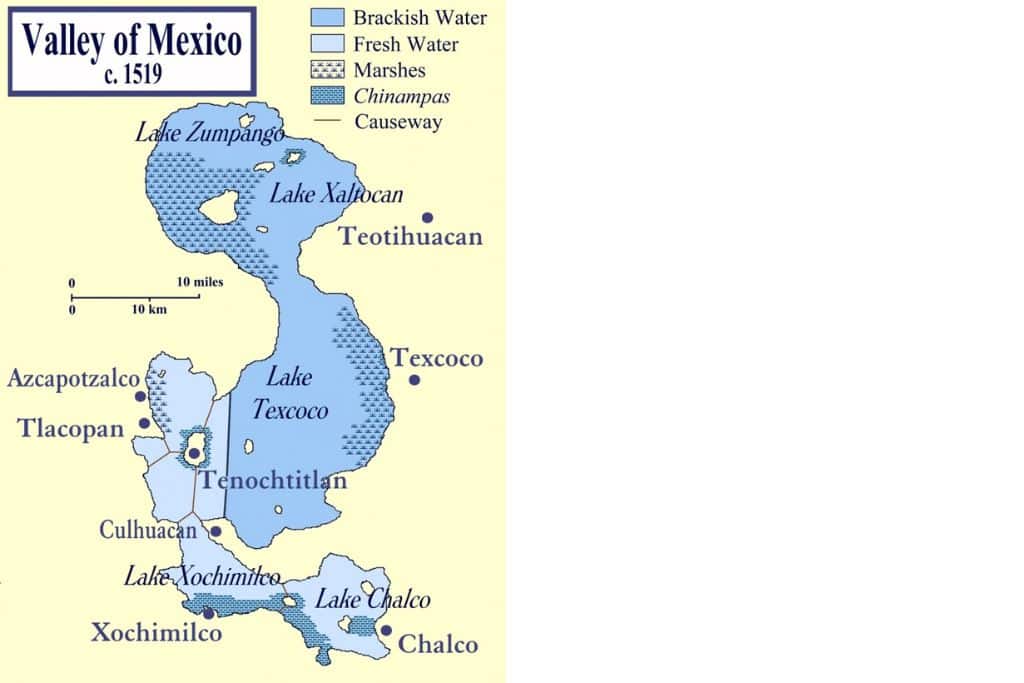
In 1607, Spanish conquistadors sought to expand Tenochtitlan beyond its borders into the lakebed of Lake Texcoco. The city was destroyed and a Desagüe was built to drain the Valley of Mexico of its system of lakes. Flooding caused by heavy rainstorms further fuelled drainage projects, and Mexico City was built upon the ruins of Tenochtitlan, with most of the new city resting in the basin of Lake Texcoco. Today, there remain only vestiges of Lakes Xochimilco, Chalco, and Zumpango. Most of the water remaining in the canals of Xochimilco emanates from a water treatment plant and is heavily polluted due to infrastructural development, agricultural run-off, tourism, and inadequate waste management practices. When Mexico City’s antiquated sewer system is flooded after heavy rainstorms, treatment facilities will release human waste into Xochimilco, flushing canals with ammonia, heavy metals, bacteria, and toxic chemicals. Since amphibians, such as the axolotl, have highly permeable skin through which they sometimes breathe, this frequent exposure to pollution makes them extremely vulnerable to disease and poisoning. Further exacerbating the axolotl’s plight, several years of low rainfall, long periods of drought, and increasing temperatures brought about by climate change have made remaining natural habitats susceptible to drying up.
Another primary threat to wild axolotl populations has been the introduction of invasive species to the lakes and canals of Mexico City. In the 1970s and 1980s, the Mexican government, in collaboration with the Food and Agriculture Organisation of the United Nations, released thousands of common carp (Cyprinus carpio) and tilapia (Oreochromis niloticus) into Xochimilco as part of a national poverty relief project. Since these two species were easier to breed, it was believed that the initiative would feed a greater volume of people and incorporate more protein into local diets. Unfortunately, the carp and tilapia quickly assumed the position of top predators, consuming axolotl eggs and juveniles, as well as the main prey sources of adult axolotls. Today, these introduced fishes have multiplied to extremely high abundances, with tilapias comprising 95% of the canals’ animal mass. In a recent study, researchers collected approximately 600 kilograms of tilapia in one small channel utilising a 100 metre net.
Although wild axolotls were previously caught for the international pet trade, for local consumption, and for medicinal uses, it is now presumed that any axolotls traded nationally or internationally are bred in captivity. Nevertheless, scientists have recently expressed concern about the degree of inbreeding observed in laboratory specimens, should wild axolotls go extinct. This lack of genetic diversity is partly due to the fact that the heritage of most laboratory axolotls can be traced back to a group of 34 individuals captured in Xochimilco in 1863 by a French-funded expedition, which marked the start of widespread axolotl breeding across Europe by naturalists and museums.
Despite attempts to introduce wild axolotls to captive populations to diversify the gene pool, and even attempts to add tiger salamanders (Ambystoma tigrinum) to the mix, scientists have calculated an average axolotl inbreeding coefficient of 35% (a score over 12% indicates breeding with first cousins and is of serious concern). Therefore, most axolotls in laboratories and aquariums across the world are not only highly inbred, but are also part tiger salamander. Significantly more vulnerable to infectious disease, malformations, and genetic abnormalities, which have already been observed within axolotl breeding programmes, these inbred captive populations are unsuitable for reintroduction and repopulation efforts. Furthermore, scientists cannot be certain that specimens being studied have not already diverged from their wild counterparts to the extent that they have lost pivotal elements of regeneration.
Conservation
In 2021, the axolotl was launched into pop culture fame after being featured in the popular video game, Minecraft, with its feathery gills and winning smile keeping the amphibian in the limelight. However, the species’ plight has not yet garnered the same widespread awareness, potentially due to its abundance in captivity. At present, the axolotl is protected under category P (“Peligro de Extincion”, or Risk of Extinction) by the Government of Mexico, and although the species is listed under Appendix II of the Convention on International Trade in Endangered Species (CITES), it is under the process of “Periodic Review of species included in CITES Appendices”. In 1987, the Xochimilco wetlands were nominated a UNESCO World Heritage Site, and in 1992 the whole lake system was designated a protected area. Regardless of these legislative measures, which have done little to halt drastic axolotl population declines, officials have yet to design and implement effective, long-term, holistic conservation strategies that target the species’ two greatest threats: habitat degradation and invasive species.
One ongoing project that has been attempting to restore the axolotl’s freshwater habitat is Refugio Chinampa led by Luis Zambrano, a systems biologist at the National Autonomous University of Mexico. The project aims to restore the Aztec agricultural practice of chinampas (“floating gardens”) by working with chinamperos (farmers with plots of agricultural land in the Xochimilco lake system) to build natural canals separate from Xochimilco’s main waterways, effectively protecting axolotls from introduced predators and pollution. As mentioned, chinampas are floating structures in waterways built from reeds, sticks, earth, and other natural materials, and were previously used for sustainable agriculture. These structures contribute to the protection of native species, serving as a refuge for axolotls from predators such as carp and tilapia, and act as bio-filters that clean the water of Xochimilco’s canals and trap carbon dioxide. Local farmers who are willing to participate in the project, such as Felipe Barrero, have donated parts of their land to the cause, have agreed to dig new canals, and have committed to stop using pesticides. The practice of chinampas may also increase the availability of jobs in the region, boost the production of agricultural produce, and encourage ecotourism in the region.
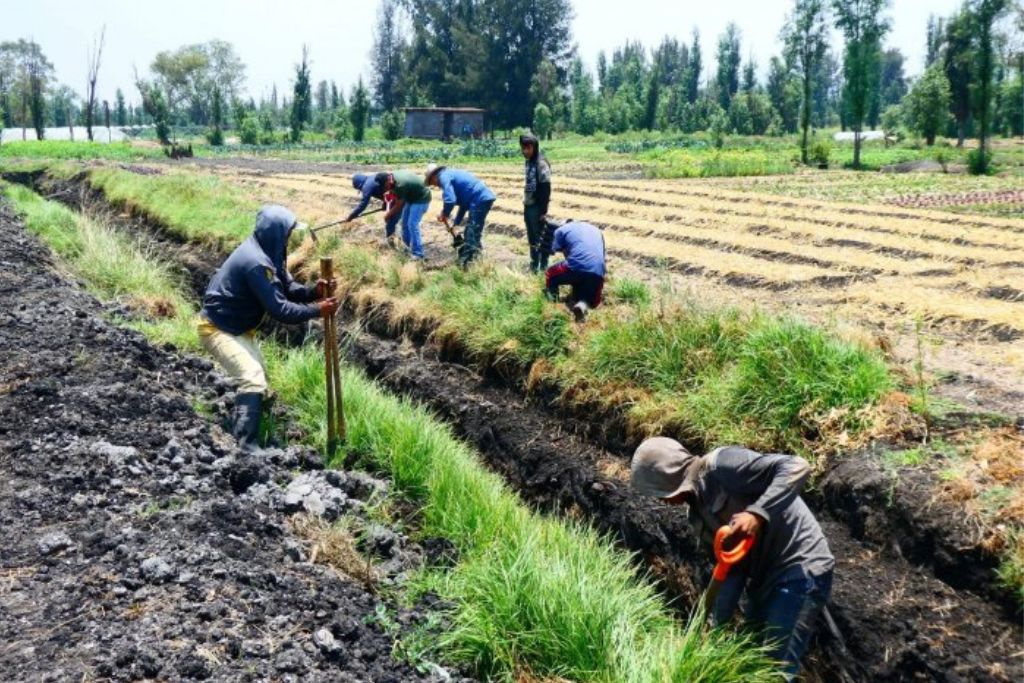
Although it has been difficult for the project to source chinamperos willing to collaborate, largely due to the fact that pesticides and chemicals have been widely promoted as efficient resources for growing vegetables, those involved with the project believe that change is emanating from younger generations of chinamperos. By following the environmentally conscious farming practices of the Aztecs, and with education and awareness campaigns increasingly inspiring students and young adults to have an interest in ecology, improvements in the water quality of Xochimilco will allow native species, such as the axolotl and its prey sources, to thrive in the region once again. It can take over one year to condition a canal for the reintroduction of axolotls, as the process involves building a precise micro-ecosystem from the ground up, taking into account details such as flora and fauna. Once the canal is deemed habitable and safe, releases from captive populations can be considered.
The issue of invasive species is slightly more complicated, as populations of both carp and tilapia have exploded in the past decades. One solution, proposed by Zambrano, is to map out regions of Xochimilco where axolotl populations persist and hire teams of local fishermen to sweep these areas of fish on a regular, long-term basis. While this practice would not remove all the fish, these sweeps would reduce the pressure on axolotls for a window of time within which the species could re-establish itself. Since tilapia have been found to target axolotls at the juvenile stage, and carp tend to feed on axolotl eggs, Zambrano believes that axolotls might be able to thrive if the risk of predation were lessened while at their most vulnerable life stages.
The possibility of using lab-bred axolotls to repopulate Xochimilco and surrounding lake systems has been studied with promising results. In 2013, the Centre for Biological and Aquaculture Research (CIBAC), a breeding facility near Xochimilco, released several thousand axolotls for a behavioural study, with some surviving and breeding in the following year. CIBAC is attempting to breed wild-type axolotls in an effort to preserve the species’ genetic diversity, and notes that captive-bred salamanders may thrive in the wild if raised to be a certain size before their release. In 2017, Zambrano released 10 lab-bred wild-type axolotls into a protected pond near the National Autonomous University of Mexico campus, with the hope that these individuals, should they survive and breed, might act as a genetic bank for the species in the future. In the span of two years, Zambrano periodically released and tracked axolotls to better understand their behaviour and preferred habitat. His research indicates that the species prefers relatively dirty ponds over pristine ones, which means that Xochimilco could serve as a suitable habitat once other pressures are mitigated.
Scientists and conservationists have stressed the importance of neutralising the threats of predation and pollution before attempting the reintroduction and repopulation of axolotls in Xochimilco, as premature releases could potentially provoke an increase in invasive fish numbers if axolotls were simply offered as an easy prey source. Examples of successful reintroductions, such as the pool frog (Pelophylax lessonae) in Britain and the hellbender salamander (Cryptobranchus alleganiensis) in the United States, have involved careful management of the focal ecosystem and the cooperation of surrounding communities.
If you want to learn more about endangered species, make sure to check out other articles from our Endangered Species Spotlight Series
How To Help
- Use natural products in your home. Even if you do not live in Mexico City, products that contain ammonia or heavy metals are incredibly harmful for any ecosystem or environment around the world. When purchasing cleaning or personal hygiene products, try to look for organic, plant-based or natural items that are free of heavy chemicals. Products like wet wipes, detergents containing phosphates, micro-beads in toothpastes, face washes, scrubs and abrasive cleaners, chlorine-based bleach and aerosol cans are some to avoid.
- Raise Awareness. The axolotl may be widespread in fish tanks and laboratories across the world, but its wild population faces a high risk of extinction. Let your friends and family know about the plight of the axolotl, raise awareness in your local community, and educate others about the importance of saving this incredible species.
- Get involved. If you are keen to get involved with the conservation of the axolotl and its native habitat, you can host a fundraiser, get involved with a conservation organisation to volunteer your time in Mexico City, or donate to research and conservation efforts.
Featured image: John P Clare/Flickr.
How can I contribute to a more sustainable planet?
- 🗳️ Vote for Climate Action: Exercise your democratic rights by supporting candidates and policies that prioritize climate change mitigation and environmental protection. Stay informed with Earth.Org’s election coverage.
- 👣 Reduce Your Carbon Footprint: Make conscious choices to reduce your carbon footprint. Opt for renewable energy sources, conserve energy at home, use public transportation or carpool, and embrace sustainable practices like recycling and composting.
- 💰 Support Environmental Organizations: Join forces with organizations like Earth.Org and its NGO partners, dedicated to educating the public on environmental issues and solutions, supporting conservation efforts, holding those responsible accountable, and advocating for effective environmental solutions. Your support can amplify their efforts and drive positive change.
- 🌱 Embrace Sustainable Habits: Make sustainable choices in your everyday life. Reduce single-use plastics, choose eco-friendly products, prioritize a plant-based diet and reduce meat consumption, and opt for sustainable fashion and transportation. Small changes can have a big impact.
- 💬 Be Vocal, Engage and Educate Others: Spread awareness about the climate crisis and the importance of environmental stewardship. Engage in conversations, share information, and inspire others to take action. Together, we can create a global movement for a sustainable future.
- 🪧 Stand with Climate Activists: Show your support for activists on the frontlines of climate action. Attend peaceful protests, rallies, and marches, or join online campaigns to raise awareness and demand policy changes. By amplifying their voices, you contribute to building a stronger movement for climate justice and a sustainable future.
For more actionable steps, visit our ‘What Can I do?‘ page.
This story is funded by readers like you
Our non-profit newsroom provides climate coverage free of charge and advertising. Your one-off or monthly donations play a crucial role in supporting our operations, expanding our reach, and maintaining our editorial independence.
About EO | Mission Statement | Impact & Reach | Write for us

